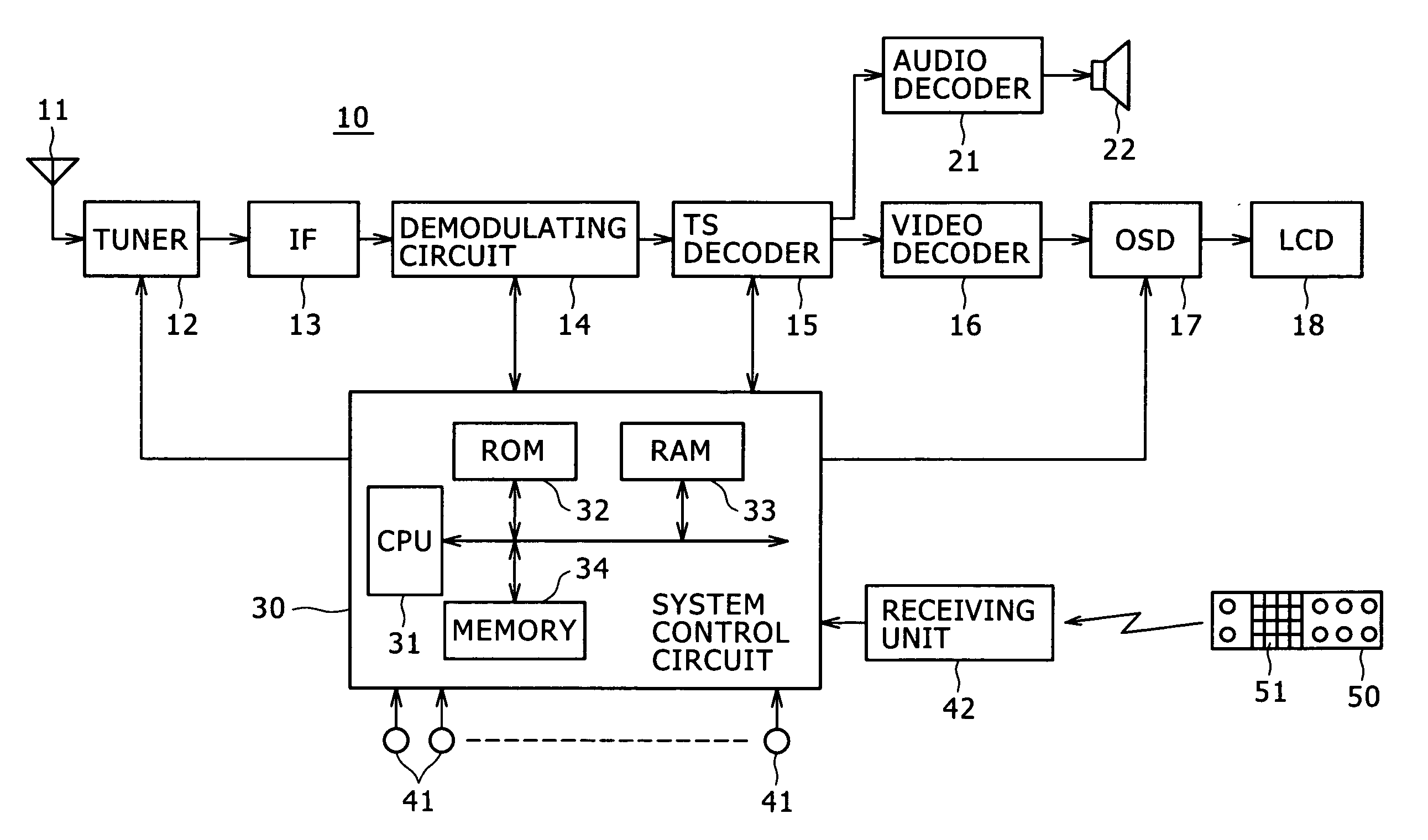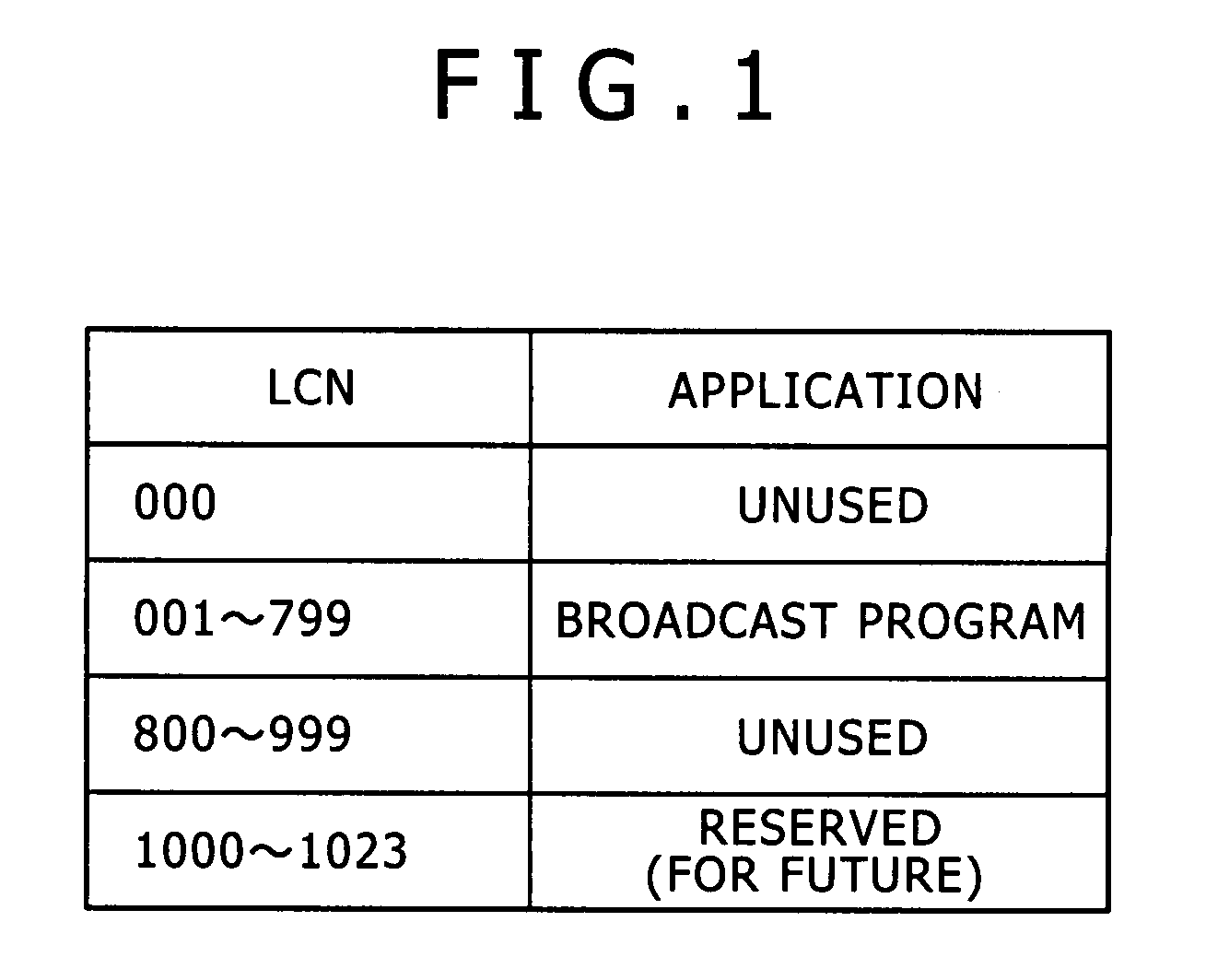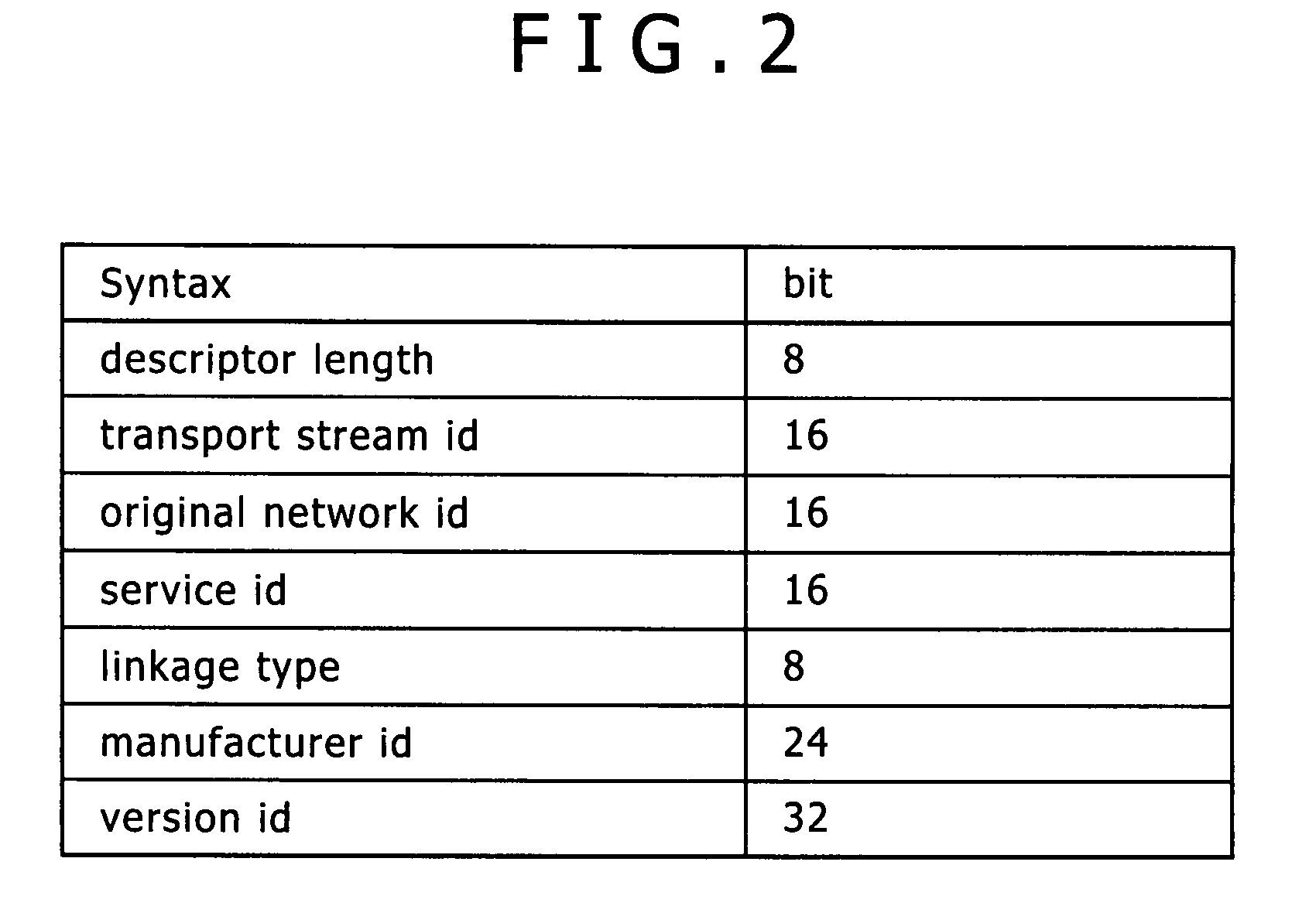Receiver for terrestrial digital television broadcasting
a technology for terrestrial digital television and receivers, applied in the field of receivers for terrestrial digital television broadcasting, can solve the problems of frequent change of broadcast service areas and unusability, and achieve the effect of facilitating the selection of the desired channel
- Summary
- Abstract
- Description
- Claims
- Application Information
AI Technical Summary
Benefits of technology
Problems solved by technology
Method used
Image
Examples
Embodiment Construction
[1] Information (Data) Used in the Embodiment of the Present
[0046]The terrestrial digital television broadcasting transmits a video signal, audio signal or data signal and at the same time various information signals as well. The following describes contents and functions of the information signals usable in the embodiment of the present among the various information signals. Related matters are also described.
[1-1] Logical Channel Number (LCN)
[0047]The LCN is data for identifying a channel (logical channel and service) and has such values as shown in FIG. 1. In other words, the LCN is 10 bits long and can use values 10 to 1023, however,
[0048](11) the LCN is allocated to all channels;
[0049](12) the values 001 to 799 out of the LCNs are uniquely allocated to a plurality of channels;
[0050](13) the values 001 to 799 out of the LCNs are the same value in the same channel (the same service) even if broadcast service areas are different from each other;
[0051](14) the values 800 to 999 out...
PUM
 Login to View More
Login to View More Abstract
Description
Claims
Application Information
 Login to View More
Login to View More - R&D
- Intellectual Property
- Life Sciences
- Materials
- Tech Scout
- Unparalleled Data Quality
- Higher Quality Content
- 60% Fewer Hallucinations
Browse by: Latest US Patents, China's latest patents, Technical Efficacy Thesaurus, Application Domain, Technology Topic, Popular Technical Reports.
© 2025 PatSnap. All rights reserved.Legal|Privacy policy|Modern Slavery Act Transparency Statement|Sitemap|About US| Contact US: help@patsnap.com



